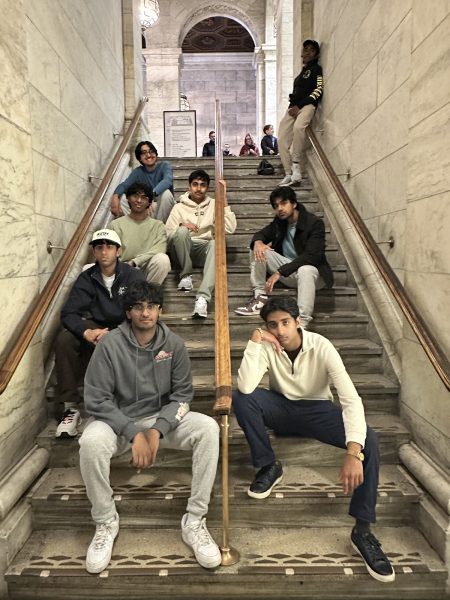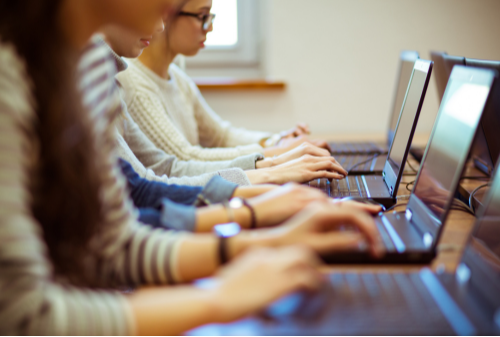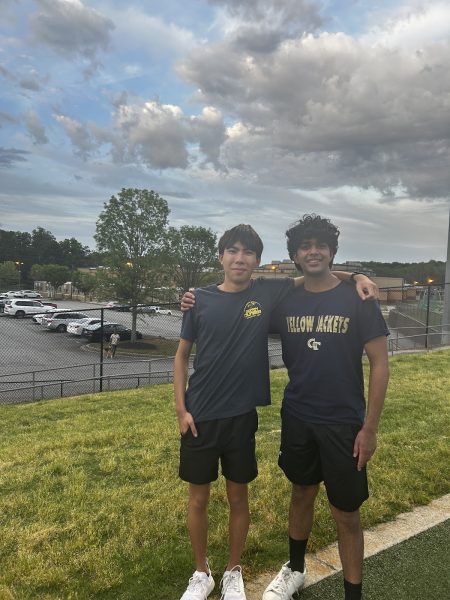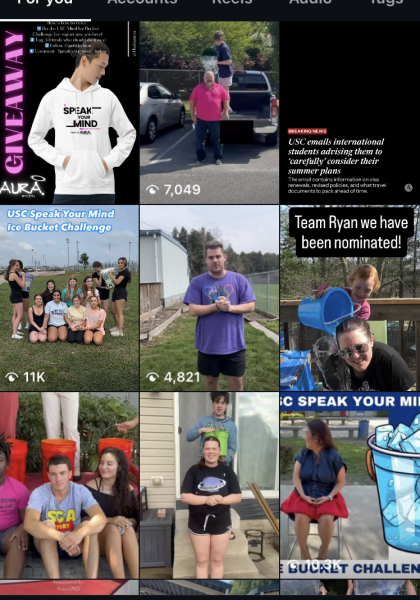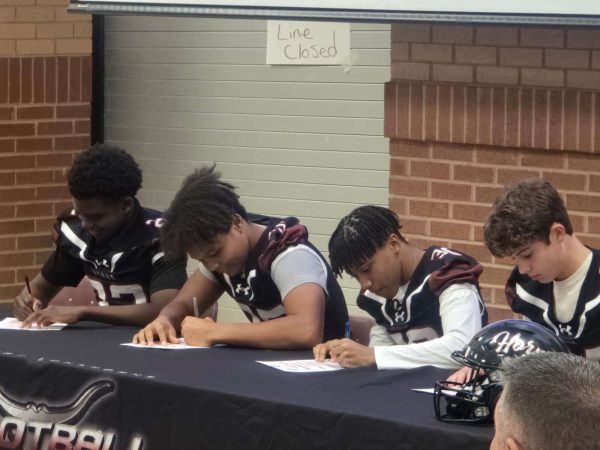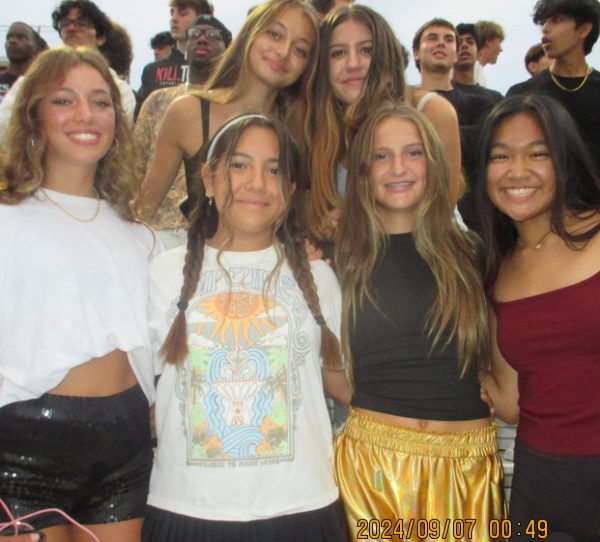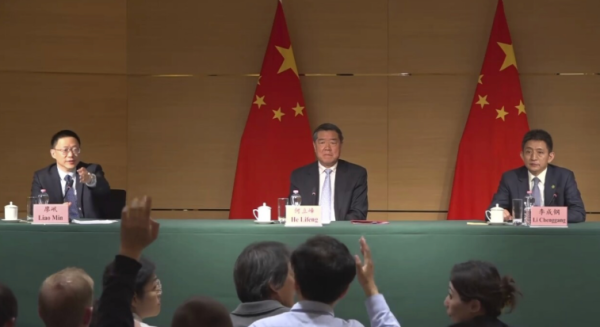School Fights & Social Media: Correlation or Causation?
The rapid increase in school fights is plaguing schools across Georgia and the nation, and upon reflection, it isn’t hard to see why. One simply has to enter the world of the typical high school student, a realm that most of us know all too well.
You open your phone and find your Snapchat or Instagram feed flooded with messages and videos, filled with astounding reactions, shaky recordings, deafening roars and crowds of people. Ask any student what they initially think of when they see this description, and the answer will almost certainly be “a fight in the cafeteria” or “today’s brawl in the bathroom.”
No matter who you ask, the responses will boil down to one answer: school fights.
This phenomenon doesn’t just come with bloody noses and sore knuckles in our schools. There are suspensions and other disciplinary consequences as a result, which are enough to derail the future of any student involved.
When it comes to the state of Georgia, violence in schools is on an alarming rise. The Georgia Department of Education reports a staggering increase in school fights over the past year, with some districts reporting an unprecedented 200% jump in student violence. Many think that the problem lies with the students engaged in these acts, but administrators, parents and even national third parties are wrong in that blame shouldn’t be placed on these highly susceptible children.
This unwanted recognition spreads to social media and how the content helps fuel, spread and increase violent behavior in our schools. The students of Georgia are being punished for problems that don’t necessarily start with them. Rather, they begin with the buildup and effects that social media has on behavior and social interaction.
Social media plays a significant role in encouraging the violent behavior in question, as its diffusive nature compels students to engage in certain acts to avoid being perceived as cowardly or ‘weak.’ Assistant Principal Scott Luthart explained the far-reaching effects of social media and its attention-seeking culture, especially with regard to its influence on the increase in violence on campus.
“If you’re out there and you think you’re gonna fight somebody else, and you’re not really sure if you want to fight somebody else, but all these…phones come out, it’s like you don’t want to be seen on camera not standing up,” Luthart elucidated. “The fact that everybody records so much nowadays, and the fact that stuff immediately goes to social media nowadays…that has…influence on that [the substantial increase in school fights].”
Social media is a vice that enforces conformity and promotes a common goal of virality, which incentivizes people to gain attention through any means necessary. Many of these fights could be averted by an involved student under normal circumstances, but in the era of social media, the fear of ‘looking bad’ on these platforms usually leads students to engage in violence, so they will be accepted by their peers and the internet. This alarming reality sheds light on how such content being posted can affect students’ decision-making and sense of control over their actions, illustrating the degree to which social media’s reach should be evaluated in the well-being of our students.
In addition to acting as motivation in teenage fights, the influence of social media allows it to become a medium, through which unruly behavior is shared with a wide audience. Through this process, social media often glorifies otherwise deplorable acts such as fighting. The influence that the media has on students’ young, vulnerable minds has become an indelible part of why these incidents are becoming increasingly common occurrences in Georgia’s schools.
Luthart explained how something as cheap as a bar fight or street squabble can be seen in a different light due to the popularity or amount of views that it receives online, which makes a substantial impression on students’ maturing minds.
Most teenagers are “people that have not lived as long and gone through as much,” Luthart said. “They might see that [fighting] and might interpret that a different way, they’ll be like, ‘How cool!’, and that’s coming from social media.”
Clearly, social media aids the spread of school fights to a wide audience, most of whom are teenagers. Considering the role of social media in the lives of members of this age group, it is not surprising that they assimilate the violent behavior on their screens, seeing the attention it receives. Additionally, watching their fellow peers engage in such widely-viewed activity may lead them to desire a similar type of attention, which further incentivizes school fighting.
Social media is polluting the minds of teenagers all over the state and nation. With the spread of dangerous and ill conduct becoming ever-present in the digital realm, it only predicts further disaster for schools everywhere, where our kids’ safety and learning are entrusted. It is this vicious cycle that continues to drive an institutionalized culture of violence in schools, and unless action is taken to educate students about this issue, this rapid increase will only be the beginning of an even larger problem for students, parents, and administrators alike.
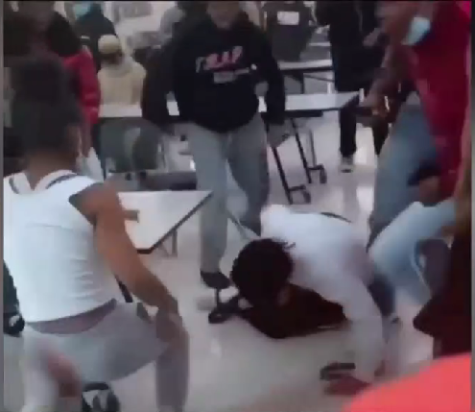
A fight between students in Clayton County, GA, where such incidents have increased by 200 percent in just 2 months of schooling. Taken from a video of the incident on a CBS46 broadcast aired August 25, 2022.
Your donation will help support The Lambert Post, Lambert High Schools student-run newspaper! Your contribution will allow us to purchase equipment and cover website hosting costs.



